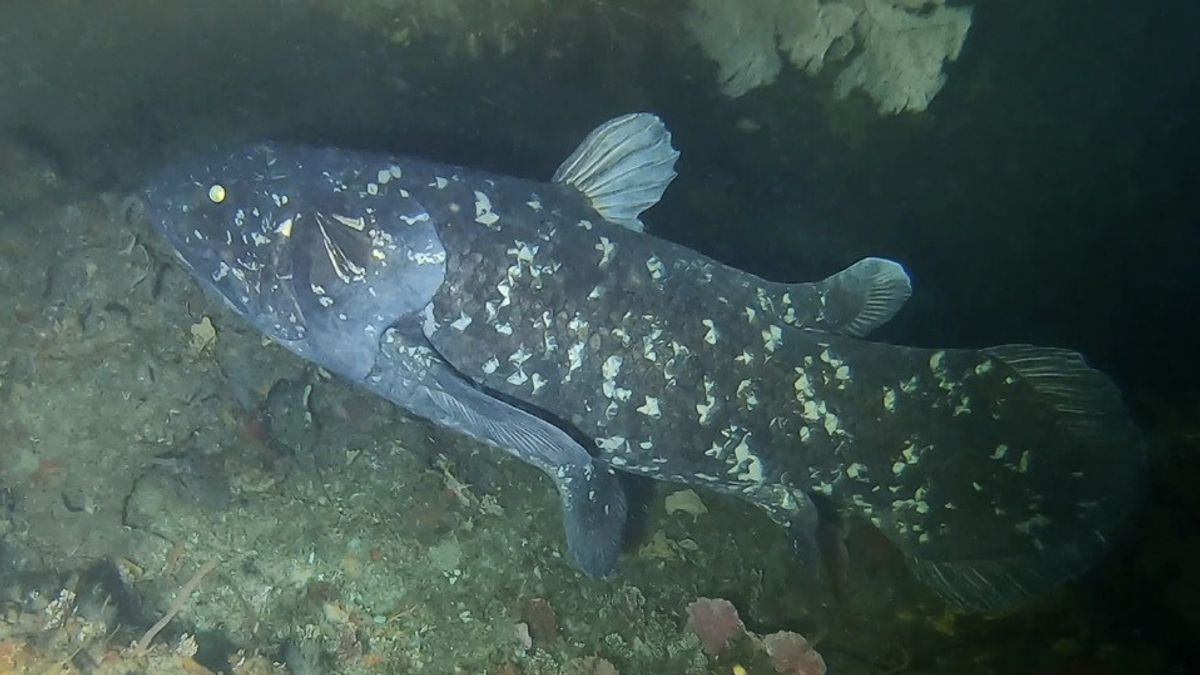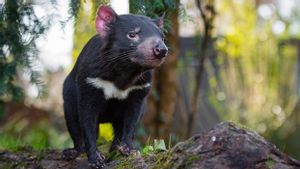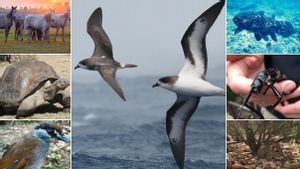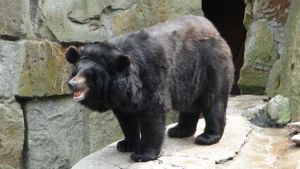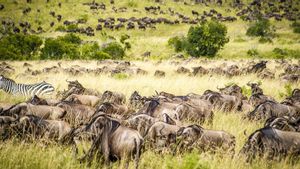JAKARTA - The coelacanth, a stunning fish thought to have gone extinct along with the dinosaurs 66 million years ago, before being unexpectedly found alive and well in 1938 off the east coast of South Africa, offers more surprises.
Scientists say the new study of these large, nocturnal deep-sea dwellers suggests they have a lifespan about five times longer than previously believed, roughly a century. And female fish carry their young for five years, the longest known gestation period of any animal species.
Focusing on one of the two living species of coelacanth, the scientists also found that this fish has a slower growth rate than other fish, and doesn't reach sexual maturity until around 55 years of age.
"Researchers used annual growth rings deposited on fish scales to determine the age of individual coelacanths, much like a person reads tree rings", said marine biologist Kélig Mahé of the French oceanographic institute IFREMER, lead author of the study published in the journal Current Biology.
Coelacanths first appeared during the Devonian Period about 400 million years ago, about 170 million years before the dinosaurs. Based on the fossil record, they are thought to have disappeared during the mass extinction that wiped out about three-quarters of Earth's species, following an asteroid strike at the end of the Cretaceous Period.
Once found alive, the coelacanth was dubbed a "living fossil", a description scientists now shun.
"By definition, fossils are dead, while coelacanths have evolved a lot since the Devonian", said biologist and study co-author Marc Herbin of the National Museum of Natural History in Paris.
Called lobe-finned fish based on the shape of their fins, which are structurally different from other fish. Such fins are thought to have paved the way for the limbs of the first land vertebrates to evolve.

Coelacanths are at sea depths of up to half a mile (800 meters). During the day they live in volcanic caves alone or in small groups. Females are somewhat larger than males, reaching about seven feet (two meters) in length and weighing 240 pounds (110 kg).
The two extant species, both critically endangered, are the African coelacanth, found primarily near the Comoros Islands off the continent's east coast, and the Indonesian coelacanth. The study focused on the African coelacanth, using scales from 27 individuals in two museum collections.
Previous research has suggested a lifespan of approximately 20 years and is among the fastest growing bodies of all fish. Turns out this was due to a misreading decades ago of another type of ring stored in the scales.
"After reassessing the life history of the coelacanth based on our new age estimates, it appears to be one of the slowest, if not the slowest, of all fish, close to sharks and deep sea sharks", said IFREMER marine evolutionary and ecologist and co-author Bruno Ernande.
"To live a hundred years is something extraordinary", Ernande added.
The Greenland shark, a large deep-sea predator, can claim the distinction of being the longest-living vertebrate on Earth, with a lifespan of around 400 years.
Ernande said researchers were surprised when they found the coelacanth's record gestation period, which exceeds 3.5 years for frilled sharks and two years for elephant and spiny dogfish.
SEE ALSO:
The researchers point out that the late sexual maturity and long gestation period, combined with low fecundity and small population size, make the coelacanth very sensitive to environmental disturbances caused by nature or humans, such as extreme climatic events or accidental overfishing.
The English, Chinese, Japanese, Arabic, and French versions are automatically generated by the AI. So there may still be inaccuracies in translating, please always see Indonesian as our main language. (system supported by DigitalSiber.id)
